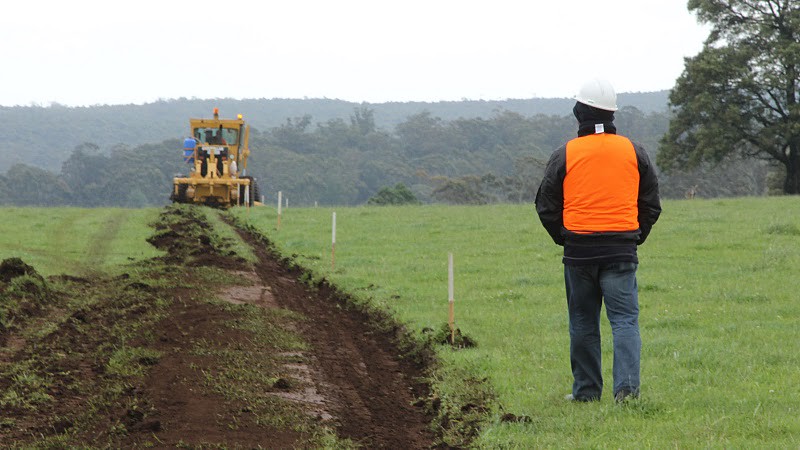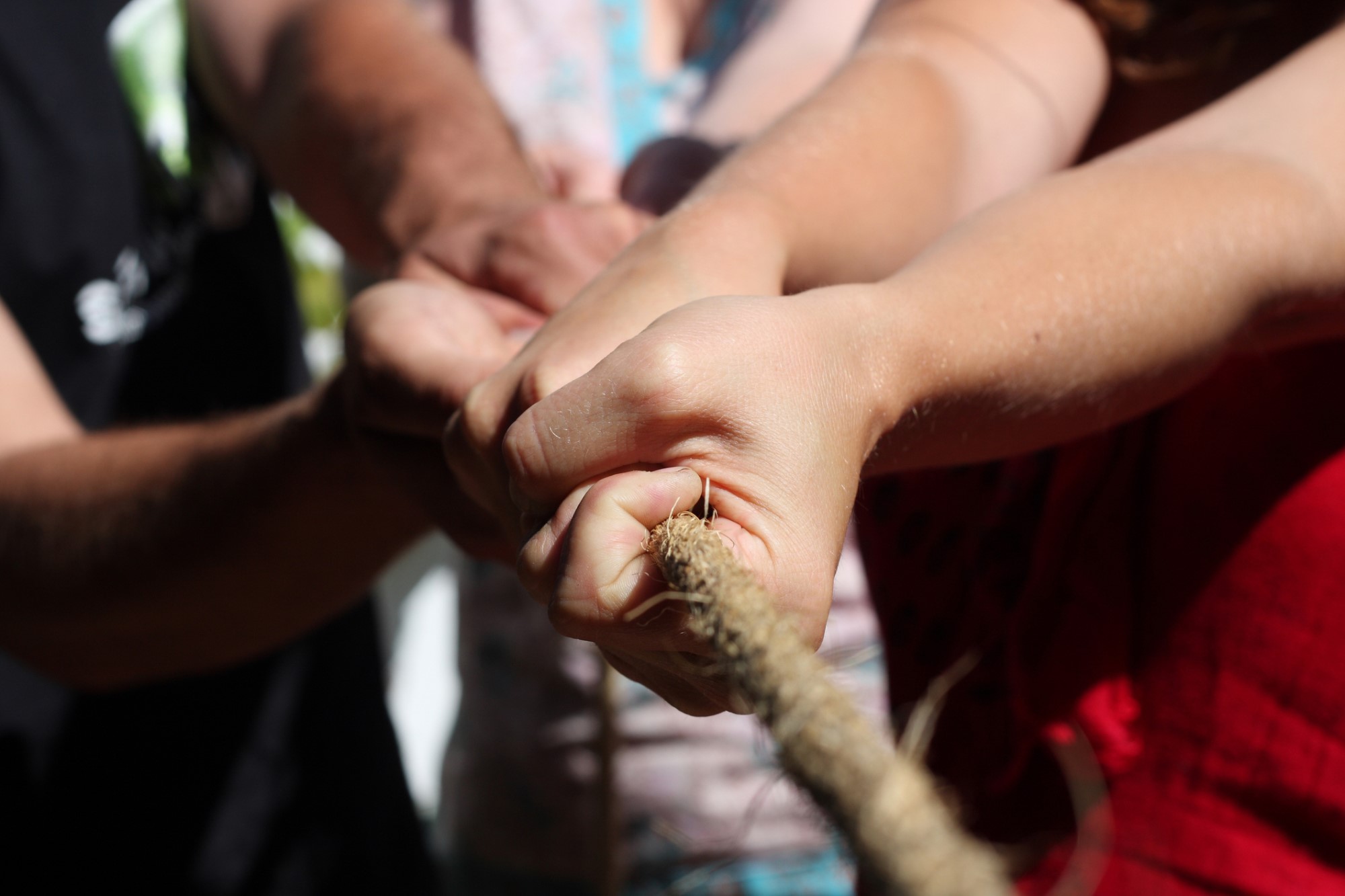The Djap Wurrung Trees, Hermeneutical Injustice, and Australia’s First Nations People
As I write this, a tense standoff between authorities and the traditional owners of a sacred Aboriginal women’s site is coming to a head in the state of Victoria, in southeastern Australia. The state government is preparing to bulldoze an area containing more than 260 large eucalyptus trees, some of which are as old as 800 years, that belong to an area sacred to the women of the Djap Wurrung nation: the Indigenous people and traditional owners of this area in western Victoria.
The proposed destruction of the site, to make way for an extension of a stretch of highway that links the two state capitals Melbourne and Adelaide, has led to a protracted battle between traditional owners and authorities, and some of the protesters have been there for over a year. Tent embassy spokeswoman Amanda Mohamet said: “We are the traditional custodians of this part of country, and we have a cultural obligation to be here.” The government insists it has sought and gained permission from traditional owners, but the protesters reject this, arguing that authorities have instead confected a ‘manufactured consent’.
The official reason for this extension is safety; authorities argue that this is necessary after 11 deaths since the beginning of 2013 on the stretch of road due to be upgraded. Protesters have now issued a red alert as fencing and machinery are being moved in. This situation is deeply distressing to the Djap Wurrung people, to the wider Indigenous community and to all Australians who stand in solidarity with them. It must be understood as a continuation and entrenchment of dispossession and colonial violence done to Australia’s First Nations people at the hands of British and European settlers. The history of the colonization, or invasion, of Australia is a history of violence to Aboriginal people and theft of the land to which their physical, ancestral, and spiritual lives are inseparably connected.
When the British colonizers arrived in Australia, a little over two hundred years ago, they encountered a land that had been peopled by its original occupants for over 60,000 years. Just pause for a moment on that number – on that length, and depth of time. The settlers encountered an ancient and complex culture formed from hundreds of different Nations, speaking hundreds of different languages; all with rich and deep religious, totemic, cultural, and ancestral connections to the land – to ‘country’. But, in another way, the settlers did not ‘encounter’ that culture at all. They saw Aboriginal people but they did not ‘see’ them. As Nayuka Gorrie writes of the Djap Wurrung efforts to save their sacred ground:
“The inability to see these sites as worthy of being protected or that they are significant is fundamentally racist. It is white selectivity that deems sacred trees unworthy of protection. This white selectivity spans across all elements of our life.”
This situation highlights an especially deep and entrenched kind of epistemic, hermeneutical injustice. The term ‘epistemic’ refers to knowledge, and the term ‘hermeneutic’ refers to interpretation. Miranda Fricker coined the term ‘epistemic injustice‘ and her original work recognized hermeneutical injustice as one type of epistemic injustice. Epistemic injustice occurs when a person or group of people are wronged specifically in their capacity as knower(s); when they are disadvantaged by being prevented from sharing or accessing knowledge.
Epistemic injustice affects those who are sidelined by others in positions of greater social power – when members of non-dominant groups are prevented from participating in meaning making of ‘shared concepts’. Those experiencing epistemic injustice may not be believed, may not be understood, or their knowledge and experience may be discounted or ignored.
Hermeneutical injustice occurs when an individual or group encounters a blind spot in how their experiences or concepts are understood. This can happen in situations where the individual or group is relegated to a position of relative social powerlessness, from which their experience is not recognized by, or reflected in, the collective conceptual vocabulary of the dominant social group.
Hermeneutical injustice is preceded by hermeneutical marginalization. Non-dominant groups are hermeneutically marginalized when they aren’t able to participate fully in the process of meaning making, so that the dominant group’s shared concepts fail to recognize the experiences of those marginalized groups. This happens when those in power are allowed to define the experience or control the conceptual apparatus. Conceptual gaps then open up in the social fabric, where a marginalized group can’t communicate to the dominant group, and where their experience, ways of understanding it and attempts to communicate it, are not acknowledged. The process whereby a group is hermeneutically marginalized is a spiral in which their communication is frustrated as a result of their marginalization, and then the frustrated communication further entrenches their marginalization.
Many levels of epistemic injustice are, in a multitude of ways, central to the experience of Australia’s First Nations people and hermeneutical marginalization is one of the central features of the colonial mindset; hermeneutical injustice is present at the very roots of colonial attitudes to Aboriginal people’s experiences – historically and contemporarily.
Aboriginal people’s deep cultural knowledge of the land did not register in the European consciousness. That is no mere accident of cultural difference. It has to be understood, historically, as embedded in the intentions with which the European settlers arrived on the continent. They came to take ownership of the land, to acquire and use it for the purpose of their own prosperity, and that intention mediated all their interactions with Aboriginal people.
When the first settlers arrived they saw a vast country ripe for the taking. Their determination to own and exploit the land blinded them to the truth about the Aboriginal people’s relation to the land. The settlers refused to acknowledge, refused even to see, the deep and ancient knowledge structures of the Indigenous cultures. They had no register in which Aboriginal knowledge of the land could be understood.
Consider for instance the type of knowledge known as the Songline, or dreaming track. Songlines are complex maps that record creation stories and histories that navigate vast terrain and map story onto country. They are recorded in songs, stories, ceremonial dance, and artworks. They take in landscape, its features, things people need to know (like where to find water or other local plant or hunting knowledge), as well as history and ancestry, things related to ceremony and other sacred knowledge. This knowledge is not ‘about’ the landscape, it is embedded in it, it is inseparable from it – and so destruction of country is destruction of knowledge. It is a kind of epistemic violence, which is related to, leads to, and sustains actual physical violence.
Fricker discussed the ‘virtue of hermeneutical justice’ whereby sensitivity to the gap in hermeneutical resources might be cultivated to prevent hermeneutical injustices. In Australia that means listening to Aboriginal people’s account of their experience, and learning from them what they know about the vast landscape of the continent.
Indigenous author Bruce Pascoe, in his recent book Dark Emu, has seriously challenged the view, upon which Australian history is based, that the first Australians lived a simple hunter-gatherer lifestyle. His research uses records from the settlers such as letters and diaries reveals a much more complicated Aboriginal economy based on land care, manipulation of landscape by building of dams and wells, planting, irrigating, harvesting, and food storage.
Many of the documents from which this picture of Aboriginal knowledge emerges also reveal the hermeneutical marginalization that Australian history rests on, because the settler accounts are epistemically blind to Aboriginal knowledge about the land, and therefore to the nature and depth of their cultural relationship to it. Many of these documents reveal details of Aboriginal land use while at the same time, perversely, dismissing or underplaying it.
So we could see, in the fight to save the Djap Wurrung trees in western Victoria, an opportunity for redress, and to promote epistemic justice, rather than a clash of interests between traditional owners and road safety concerns.
As Djap Wurrung man Nayuka Gorrie points out,
“The official line given by the Major Roads Project Authority is safety. This framing can be understood as a way to undermine land defenders and position us as against the interests of the rest of the population.”
To treat the issue as though the claims of safety were in some way ‘equivalent’ to, and therefore can be balanced against, sacred relation to country is a form of epistemic injustice through equivocation. The ‘road safety’ defense is a form of hermeneutical marginalization in the way it uses well-healed concepts (like “safety”) that are unmistakably tied to the goals and interests of the dominant group. These concepts effectively erase the very different language of Aboriginal people in their attempts to convey their physical, cultural, and spiritual connection to country. As Sissy Austin explains:
“This is a landscape that forms the basis of Djab Wurrung identity – from the roots of the trees that are more than 800 years old, the rolling hills, the kangaroos, eagles and black cockatoos, to the stories of the stars, the moon and the sun. You cannot have one element of country without the other.”
Before European settlement Aboriginal Australians were astronomers, they had complex maps of the stars represented in constellations which they recorded in rock paintings. They had highly developed systems of agriculture, oral literary traditions, and fine art – yet the settlers’ concepts of ‘civilization’ did not recognize them as civilized. That hermeneutical marginalization and the injustice it perpetuates continues as authorities ignore the pleas of the Djap Wurrung for the preservation of their sacred country.





